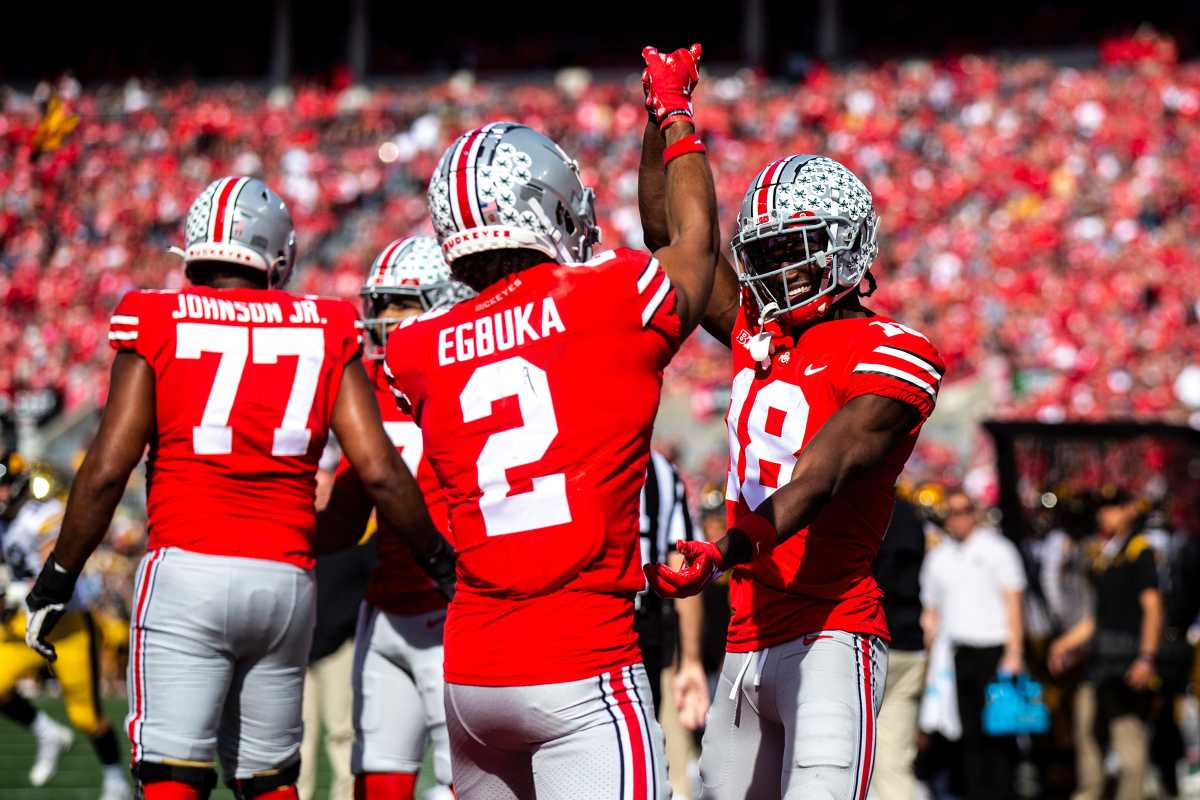
Size matters to new Ohio State leaders using Buckeyes’ clout to shape college sports reform
Columbus, Ohio At the very least, the Ohio State athletic department Ross Bjork will manage does not yet exist, nor does the environment in which it will function.
Beginning on March 1, Bjork will work as a special advisor to outgoing athletic director Gene Smith, who will step down after four months. Ohio State made sure that the move into what might be rough waters ahead went well.
I think there will be some significant turning moments in the next three to five years, Bjork stated. We’ll take the lead in those conversations.
Given that Bjork signed a five-year contract to become Ohio State’s eighth athletic director, the timeline seems interesting. During an hour-plus debut media session on Wednesday, he and the man who hired him, newly appointed President Ted Carter, reaffirmed their expectation that Bjork will lead a period of major reform.
Manage it locally, but take the helm nationally and throughout the Big Ten.
According to Carter, certain universities should have a little bit of a different weight in the room with everybody and all the other universities. This isn’t an attempt to outdo anyone else. Comparatively speaking to our contemporaries, this university has excelled in every program and every sport.
Carter and Bjork spoke with a shared goal rather than focusing on particular reforms, as many still need to be implemented. Instead, they put forward a united front regarding the role that the first new athletic director at OSU in 19 years ought to play in determining the direction of college athletics in the ensuing 20 years.
Bjork has never attended Ohio State before. He was careful to highlight the state roots of his family. How was his mother Linda raised on a farm outside of Williamstown, which his family established in 1851? When he was a child, he recalled the sound of the family car approaching his grandparents’ house on Township Road No. 30 across the gravel.
During his 19 years as OSU athletics director, Smith nurtured an administrative tree, but Bjork did not grow on it. He took care to underline how much he had always respected his predecessor. He remembered a nearly adoring response to their initial meeting in 1997, when Bjork was just an entry-level development officer at Missouri and Smith was the AD of Iowa State.
Additionally, Carter has no prior Ohio State affiliation. That did not meet the requirements set by the board of trustees when they hired him, nor did it meet theirs when they hired Bjork. Rather, while evaluating the candidates submitted to him by a search team that started its work in October of last year, he gave priority to three factors:
• A leader in a challenging space with the ability to manage the country’s biggest and highest-earning athletic department.
• A knowledge of how college athletics is evolving, from revenue from name, image, and likeness to the transfer portal, the expansion of the football playoffs, and changes to the NCAA’s governance structure.
• In a Big Ten that expands to 18 members later this year, someone who could come in and carry the true weight of Ohio State University is the final addition.
Carter declared that Ross was a clear winner in that discussion based on those three criteria.
Those last two things can turn out to be the most important.
After 12 years at Ole Miss and A&M, Bjork is leaving one massive league for another, the soon-to-be 16-team SEC, to join the soon-to-be 18-team Big Ten. Going forward, those two groups will have the biggest say in how college sports are organized.
Bjork declared, People are going to go around the room. They will ultimately seek the final say from the SEC and the Big 10. And things are just as they are at the moment.
However, he and Carter are aware that uncontrollable forces will also sculpt the terrain. Former players may receive judgments in the billions of dollars from antitrust cases against the NCAA that are set for trial in a year. Congress is still debating possible legislation.
Charlie Baker, the president of the NCAA, suggested moving NIL operations inside athletic departments and letting institutions pay athletes directly. Revenue sharing was mentioned by both Carter and Bjork as being possible, if not inevitable.
Bjork distinguished between championship brands” and fighter brands in terms of sports programs. Despite its wealth and stature, he categorized Texas A&M as belonging to the former category. Ohio State is an example of the latter.
Both are, of course, part of the Big Ten. One of Baker’s ideas, which would break the future Power 4 football programs into their own governance systems, would incorporate all of them.
Baker has accepted that projects with revenues of $100 million or more are unique and should be addressed as such, Bjork said with great enthusiasm. He did not go so far as to support that football division before giving the objectives and tactics more careful consideration.
Carter stated that he expects Bjork to deliver OSU’s point forcefully on a variety of subjects, from broadcast contracts to additional league realignment.
Within the D1 athletic organization, Carter remarked, we are a vast, powerful group. We ought to speak up loudly. And we ought to be ready to go forward and carry that out.
Leave a Reply